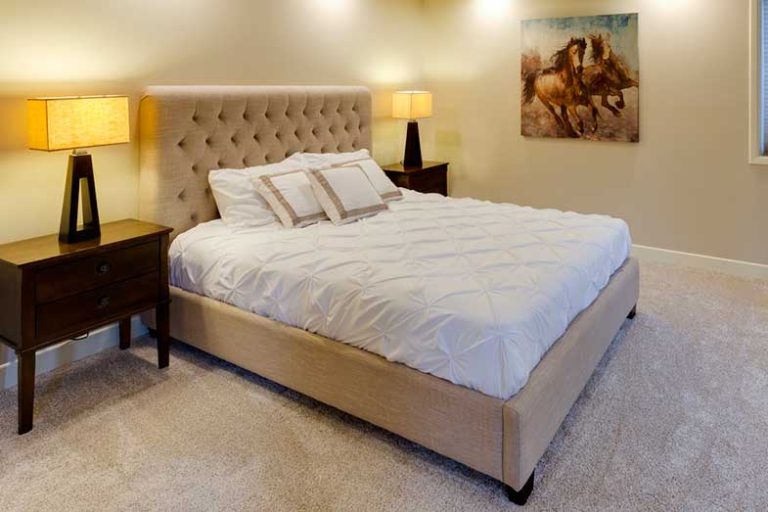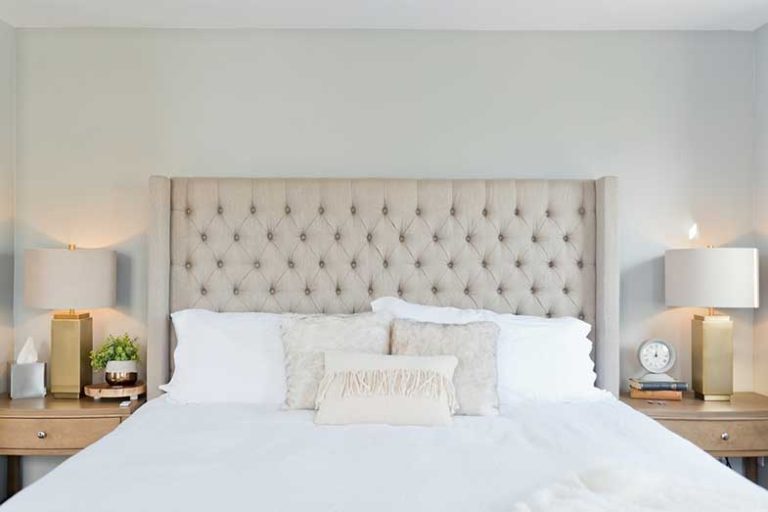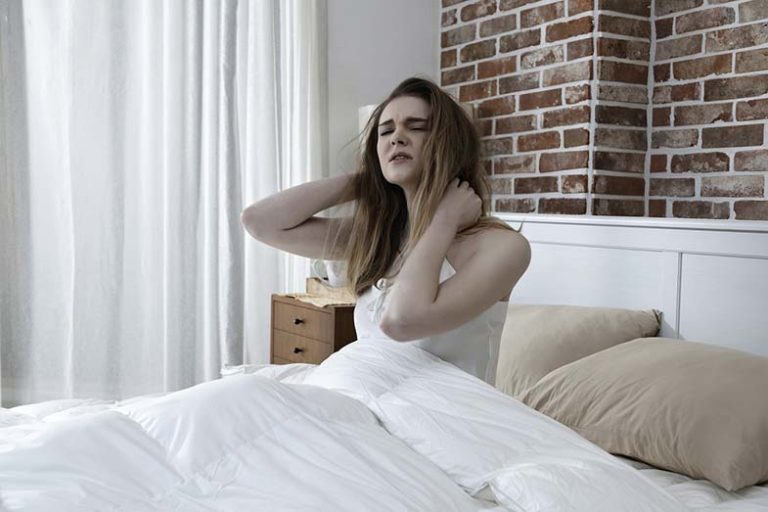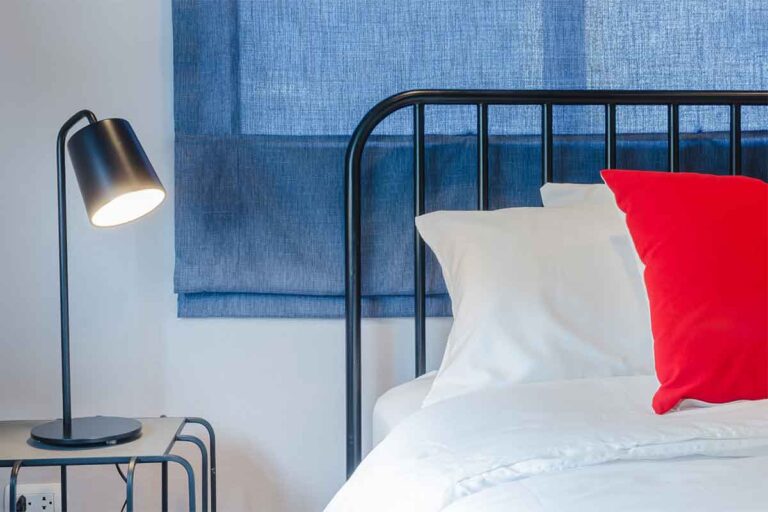Sleep Number Bed Sinks in the Middle (How to Fix)
Disclosure: We may get commissions for purchases made through links in this post.
Without a doubt, Sleep Number beds have become a hit in the past decade. You can adjust these expensive airbed mattresses to settings from 1-100, according to your exact comfort level – hence, the term “Sleep Number.” While this technical aspect puts it on top of a traditional permanent-use mattress, it is also a huge detriment that makes the bed more prone to sagging and other malfunctions.
If your Sleep Number bed sinks in the middle, fix the problem by replacing damaged parts, checking for air leaks, adjusting sleeper settings, or utilizing comfort layers. You can also contact customer support to order parts or get a replacement mattress if under warranty.
The presence of Sleep Number bed issues gives people the impression that this heftily-priced mattress might be a little too overrated. This article does not aim to approve or disprove this sentiment but intends to educate you further about Sleep Number bed models, the Trench Effect, and how to resolve this problem.

Understanding the Trench Effect
A common complaint about these expensive airbeds is that the Sleep Number bed sinks in the middle or creates a trench. This problem is among the top five things reported by consumers and should be part of your considerations when researching or purchasing one. It should not deter you from owning a Sleep Number bed, as nothing beats a comfortable, good night’s sleep. But with the Sleep Number bed technology comes a price tag, and that is durability. The more technically advanced the bed type is, the more prone it is to have a sunken middle.
To better explain this, let us take the example of a base mattress and a FlexFit smart bed – the variant that splits at the head part or all the way. Depending on the bed size, both models may or may not have dual air chambers. In reality, you will be better off with a mattress with a single chamber as this setup tends to fill out the mattress and distribute airflow more evenly. On the other hand, Dual-chamber types have air chambers on each side of the bed, which allows the sleeper to select different settings. It is this feature that makes the mattress more comfortable but less durable at the same time.
Why Your Bed Type Matters
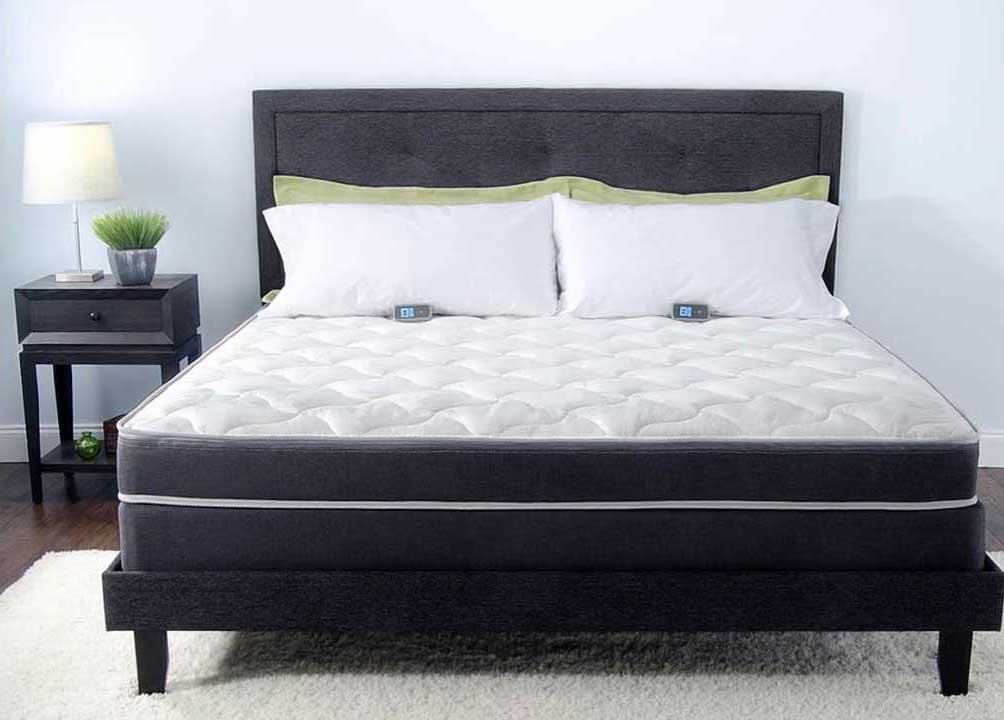
Now that you know what brings about the Trench Effect on your crib, it is also important to familiarize yourself with the different Sleep Number bed models. Understanding their differences and correctly identifying which one you own (or intend to buy) will help you remedy this problem the best way possible.
Classic
This series is Sleep Number’s entry-level and cheapest offering (ranging from $599 to $2,399), consisting of two different mattresses: the C2 and C4. The difference is the memory foam comfort layer above the bed’s DualAir system. As an example, the C4-grade mattress offers a 9-inch profile, 3-inch memory polyfoam comfort layer, and three zones of air bladders that allow you to adjust the bed’s firmness. Both mattress grades come with built-in sensors that track sleep time, position changes, and other patterns. The best pick out of this series depends on your firmness preferences, sleeping behaviors, and weight, but be wary of reported durability problems.
Performance
With more cooling memory foam for people who sleep warmer, this series offers a higher profile than the Classic and is slightly pricier at $1,849 to $3,799. Mattress models include the P5, PSE, and P6. The first one has a 4-inch polyfoam comfort layer and medium-to-soft firmness. The second one has a similar polyfoam comfort layer but a different firmness range. The last one, the P6, has a 5-inch polyfoam comfort layer and firmness options that go from medium-soft to medium-firm. In this series, all mattress grades have an 11-inch profile, built-in sensors, and Responsive Air technology that adjusts the mattress firmness while you sleep. Keep this last bit of information in mind when troubleshooting possible air leaks in your bed later.
Innovation
Sleep Number’s luxury series, priced between $2,199 and $6,399, has these mattresses: i8, i10, and iLE. The highest-rated is the i10 model, with a 13-inch profile, 7-inch comfort system, and two reversible polyfoam layers. This lineup comes with temperature balancing technology, sleep sensors, and Responsive Air technology. It also has the widest firmness range that goes from soft to medium-firm. The only downside of this model is its air bladder technology, reported for its durability issues.
Cooling Memory Foam
Recently added to Sleep Number’s lineup, the Sleep Number M7 360 Smart Bed offers more pressure point relief – thanks to layers of contouring memory polyfoam and support customization. This model has an 11-inch profile and utilizes a unique cell technology in the 5-inch memory foam surface for extra airflow to diffuse heat away from you when you sleep. Its price ranges from $3,149 to $8,298, depending on if you buy the standard mattress or the FlexFit variant.
How to Fix A Sunken Mattress
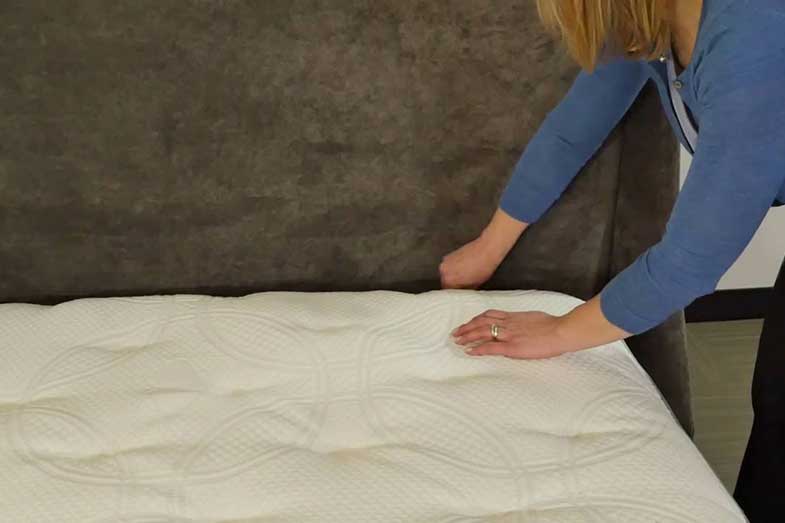
Honestly, there is no true way of really fixing the Trench Effect on your Sleep Number mattress apart from sending it to the manufacturer for repairs or entirely replacing it. That said, there are a few things that you, as an owner, can do to improve the quality of your sleep. Depending on the type, age, and severity of sagging on your mattress, these steps would vary in terms of effectiveness. They are still worth a shot, especially if you are outside of warranty and not yet ready (nor willing) to spend a fortune in getting a brand-new mattress:
1. Inspect the Condition of Your Bed Frame
It could probably be the last thing on your mind, but in certain instances, a damaged spring box or bed frame brings about the Trench Effect on your mattress. If you think this is the culprit, then examine your bed frame thoroughly. Detach the mattress completely, then check the wooden pieces for damage or deterioration. Repair or replace parts of the bed frame or spring box that you find sub-par, and see if this resolves why your Sleep Number bed sinks in the middle. Fixing the bed frame should always come first before fixing the mattress. You would know that you have done right if your mattress returns to its original shape.
2. Ensure There Is No Air Loss
Contrary to what most owners think, air loss occurs every time air is put back in the mattress after sleeping on it. In turn, your Sleep Number bed keeps deflating or sinks in the middle, which is easily resolved by placing the Sleep Number setting to 100. But in some cases, it is caused by a broken connection or a leak in your bed’s air chamber, hoses, or Firmness Control System (pump). Verify if this is the case through careful inspection. Different Sleep Number bed models would have the air chamber connectors located either at the head of the bed, inside the mattress, or under it. For instance, a Sleep Number 360 smart bed would have these hose connections on the side of the mattress.
Steps:
Once you have identified where the hose connections are, follow the steps below:
- Find the white air chamber caps – they are usually stored inside the base, together with the pump. Depending on your bed model, you may need to look for an adjustable (FlexFit) or a stationary (Integrated) base to locate the air chamber caps.
- While the air chamber is capped off, switch off the Responsive Air feature in your bed controls.
- Inflate each side of your bed, 15 setting points higher than the usual setting. Next, inspect the air chamber and the hose connections for any breaks or damage as you detach the latter from the control system. Note that there should be two black O-rings on the end of the air chamber connector. Missing O-rings would mean that the connection between the air chamber and the control system is not air-tight, resulting in the Sleep Number bed losing air or mattress deflation.
- Sleep on your bed for at least three nights or until the mattress gets super soft. Take note if the mattress continues to lose air despite the chamber being capped off. If yes, there is likely a leak in the air chamber, and potentially damaged parts would warrant replacement or repair. If the issue resolves after capping off the air chamber, then the leak is in the pump.
Watch this video by Sleep Number for a complete step-by-step rundown of troubleshooting air loss:
3. Choose the Highest Number Setting
Since Sleep Number mattresses are designed to eliminate pressure points by conforming to your body, it is only natural to notice impressions on the mattress and cover (especially if you are the type who sleeps in only one position). This body imprint, however, is only temporary and should disappear after you leave the bed. If it does not go away after you get up, then chances are your bed is set to a lower Sleep Number setting. Adjust the setting to 100 to address any uneven appearance on the bed when it is unoccupied.
For a Sleep Number 360 smart bed, set your bed to fill out automatically by turning on the Responsive Air feature. Additionally, remember to fluff your comfort layer if you have one that goes with your bed. Avoid shaking it vigorously as this cover does not have foam or fiberfill in it. The correct way to do this is to smooth out the comfort layer with your hand once fully inflated. Contact customer support if you’re still unable to get rid of the unevenness. Or if you are in the middle of your warranty and this happens, maybe it is time for a mattress replacement.
4. Check the Temperature in Your Room
Since changing your Sleep Number setting to 100 is one of the remedies for a sinking bed, it is equally important to have the right temperature in your bedroom. Why? A comfort layer made of memory foam is sensitive to temperature, affecting its firmness and ability to provide comfort over time. It will become too hard if kept in a small room. Conversely, it will get soft when kept in a warm room, potentially resulting in a sunken middle part on your bed.
5. Use a Mattress Helper
When paired with a mattress topper like a 4-Inch BedStory Memory Foam Mattress Topper (view on Amazon), it restores sinking areas while providing proper comfort and alignment by offering the lack of support below the mattress. Similarly, the mattress topper provides an additional 2-5-inch layer that alleviates discomfort if your Sleep Number bed sinks in the middle. The material for a mattress helper is typically high-density polyurethane foam, while a topper can be any of the following – foam, latex, wool, gel, down alternative, or feathers. For best results, choose a thicker topper made from denser materials, and place it on top of your existing mattress. Using a mattress helper or topper is a cheaper measure to improve your sleeping comfort and is a practical solution if you are tight on budget. However, take note that this will only help reduce (not eliminate) the effects of a sagging mattress.
6. Flip the Pad
Like most regular beds, flip Sleep number comfort layers regularly. This helps prevent the cover from having permanent body impressions and significantly extending its lifespan. Rotating a Sleep Number mattress has the same effect. When you rotate your mattress, you get to sleep in its opposite, less-dampened area, causing a counter-pressure that eventually helps even out any sagging. A good practice is to flip or rotate these bed parts every three months.
On average, mattress pads have a lifespan of 2-3 years. If it has been beyond that period when you noticed the sinking of your bed, then it is most likely time for a new one. I recommend getting something similar to an eLuxurySupply Double Thick Rayon Bamboo Mattress Topper (view on Amazon) – it is a cooling pad with a fitted skirt and 100% hypoallergenic Revoloft down alternative fiberfill.
7. Adjust the Mattress Daily
For queen-size and bigger Sleep Number beds that come with dual air chambers, reinflating and adjusting the mattress daily (yes, you read that right!) is a must. While the ability to adjust your side of the bed separately from your partner is what attracts many, it is the same thing that causes sinking in the middle portion of the mattress. With dual-chamber models, the inner sides of each bed half fall in the middle of the bed. Because these inner sides become the part of the bed that receives the most pressure due to the shoulders and hips, a Trench Effect is created when two people have different sleep numbers.
8. Replace the Bed Slats
One probable reason your bed is sinking in the middle may be due to the slats of your bed frame caving in. Therefore, it is essential to regularly inspect your Sleep Number mattress and comfort layer and the actual frame. It makes perfect sense as the frame carries your entire bed. For sturdier support, add 1–2 slats in the middle and consider replacing the standard 1×4 bed slat width with either 1×6 or 1×8. Furthermore, make sure to check that you are not missing any support rails.
9. Prevent the Trench Effect
As with any other dilemma, the best way to fix a problem is through prevention. Some of the ways to prevent the Trench Effect on your bed are as follows: inspecting your Sleep Number mattress, Firmness Control System, and air chamber system often, distributing pressure evenly on the mattress by sleeping in different spots on the bed from time to time and opting for a metallic frame. Of course, this requires a conscious effort on your end. But it is worth the extra sweat than having to spend thousands of dollars buying a new mattress.
Conclusion – Sleep Number Bed Sinks in the Middle
No matter how expensive your bed is, it is not impervious to sinking or wear and tear. So instead of looking for the perfect mattress, choose what best conforms to your sleeping habits, get good warranty coverage for it, and never skip on regular inspection of your bed and mattress. Make your bed daily, or buy a variant with Responsive Air technology if you do not wish to do so.
If you have a partner, weigh your preferences. Do you crave the ability to personalize your sleeper settings? Do you have snoring problems requiring a split-type mattress? Or would you rather have a base mattress guaranteed to last longer? Lastly, take care of your bed by following the recommended steps in this guide.


